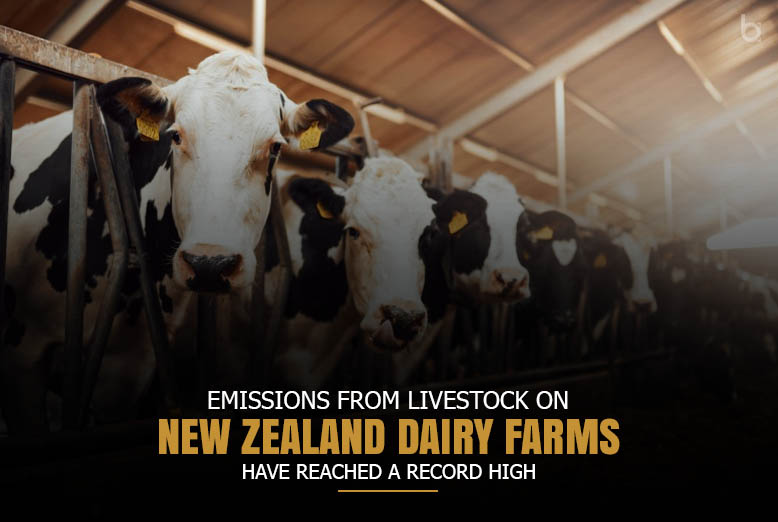Key Highlights:
- Greenhouse gases emitted from New Zealand’s dairy industry are at record highs.
- Between 1990 and 2018, its emissions grew by 57%.
- The industry expects that new scientific advances will help to minimize methane emissions in the future.
Record Emissions
According to the latest data, greenhouse gases emitted from New Zealand’s dairy industry are at record highs. New Zealand dairy emissions grew by 3.18 percent in 2019 to a total of 17,719 kilotons of carbon dioxide equivalent for the year, according to data provided from 2007 to 2019. This growth contributed to an overall gain in the agriculture sector, which produced approximately 42,000 kilotons that year.
Agriculture accounts for more than half of all industrial and household emissions recorded by Statistics about New Zealand, with dairy, sheep, and beef agriculture accounting for the majority of this. This rise adds to New Zealand’s long-term growth in agricultural emissions, which have grown by 5.5 percent over the previous decade.
6.3 million tonnes of emissions are generated by the New Zealand digestive system. Cattle are one of New Zealand’s most serious environmental issues. Agriculture is one of the country’s major emitters of greenhouse gases, which contribute to global warming and climate change.
Need for Intervention
“It’s only natural to keep the pollution profile as it is, even if you leave the regulation to the company or industry,” said Steve Abel, a spokesman for Greenpeace.
“We need to intervene, regulate and legislate to reduce greenhouse gas emissions,” he said.
The country of New Zealand is one of the world’s worst performers in terms of emissions will worsen. Between 1990 and 2018, its emissions grew by 57%. This is the second-highest rate of rising among all industrialized countries. Data earlier this year revealed a rise in New Zealand emissions. In 2018-19, it grew by 2%.
Andrew Hoggard, President of Federated Farmers, said:
“Hey, we’ve reduced the mountain of emissions,” he added, as New Zealand embarked on a crusade of virtue signals to close the agricultural sector.
Net-Zero Emissions by 2050
The industry expects that new scientific advances, such as methane inhibitors, breeding, and the use of various types of feed, will help to minimize methane emissions in the future.
In 2019, New Zealand passed the Multi-party climate legislation. We will set a net-zero CO2 emissions target by 2050 and form a climate change committee to map out the path to get there. The government is legally required to create a policy response to the Commission’s findings, which was issued in June, but it has not specified what those policy measures would be. According to the Commission’s findings improved agricultural methods and breeding of animals that generate less gas can help reduce methane emissions, but it also reduces total herd numbers by 10% to 15%.
Also Read : Wattle Health partners with China’s Nouriz




















